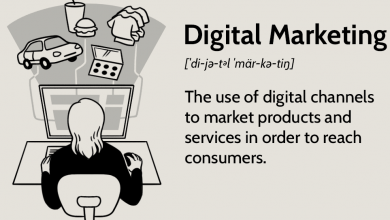Cloud vs On-Premise Software: Which is Best For Your Business?

In today’s rapidly evolving digital landscape, businesses are presented with a multitude of choices when it comes to software solutions. One of the key decisions that organizations often grapple with is whether to opt for cloud-based software or stick with traditional on-premise solutions. Both options have their merits, and the choice ultimately hinges on various factors, including the specific needs and objectives of the business. In this article, you will explore the pros and cons of cloud and on-premise software to help you make an informed decision on which is the best fit for your business.
Cloud-Based Software: Harnessing Accessibility and Flexibility
Cloud-based software, often referred to as Software as a Service (SaaS), empowers businesses with unparalleled accessibility and flexibility. It enables teams to access applications and data from anywhere with an internet connection, facilitating seamless collaboration and remote work capabilities. With no need for substantial upfront investments, cloud software operates on a subscription-based model, offering cost-efficiency and predictable budgeting.
Pros of Cloud Software:
- Accessibility: Perhaps one of the most significant advantages of cloud-based software is the accessibility it offers. Cloud solutions are hosted on remote servers and can be accessed from anywhere with an internet connection. This accessibility is particularly valuable in today’s age of remote work and global connectivity. Team members can collaborate seamlessly, whether they’re in the office, working from home, or traveling.
- Scalability: Cloud software is highly scalable, allowing businesses to adjust their resources and features as needed. As your business grows, you can easily increase the number of users or upgrade your subscription to accommodate expanding operations. Conversely, during slow periods, you can scale down to save costs. This flexibility is particularly advantageous for startups and small businesses.
- Automatic Updates: Cloud software providers handle maintenance and updates. This means you don’t have to worry about installing patches or updates manually. Software vendors ensure that your system is running on the latest version, including security updates, which help protect your data and maintain system performance
- Data Security: Businesses that opt for cloud-based accounting software experience enhanced financial management capabilities, streamlining their operations and ensuring data security.
Cons of Cloud Software
- Dependency on Internet Connection: While accessibility is a strength of cloud software, it can also be a vulnerability. It heavily relies on a stable internet connection. If your internet goes down, it may disrupt your operations.
- Security Concerns: Storing data on remote servers raises security concerns for some businesses. While reputable cloud providers invest heavily in security measures, the perception of having data outside your direct control can be a deterrent for some organizations, particularly those handling sensitive information.
On-Premise Software: Embracing Control and Customization
For businesses valuing control and customization, on-premise software remains a stalwart choice. It provides full control over data and infrastructure, offering a sense of security, particularly for organizations handling sensitive information. Unlike cloud solutions, on-premise software operates independently of internet connectivity, making it a reliable option in areas with erratic or limited internet access. Customization is a significant advantage, allowing tailored solutions that align with unique business requirements and existing workflows, though it demands substantial upfront investments and ongoing maintenance.
Pros of On-Premise Software:
- Data Control: On-premise software allows businesses to have complete control over their data. Data is stored locally, and organizations can implement their security protocols and access controls. This level of control can be crucial for businesses with strict data governance requirements.
- No Internet Dependency: With on-premise software, your operations are not reliant on a stable Internet connection. This is particularly advantageous for businesses in areas with unreliable internet access or those that require offline functionality.
Cons of On-Premise Software
- Limited Accessibility: On-premise software is tied to specific physical locations. Remote work and collaboration may be challenging, especially in today’s global and mobile business environment. This limitation can hinder productivity and flexibility.
- Upfront Costs: While the one-time cost can be an advantage, it can also pose a barrier for startups and small businesses with limited budgets. The initial investment in licenses, servers, and hardware can be substantial.
Making the Right Choice for Your Business
The decision between cloud and on-premise software is not one-size-fits-all. It depends on your business’s unique needs, objectives, and constraints. Here are some considerations to help you make the right choice, Consider your budget constraints. Cloud software typically involves lower initial costs but recurring subscription fees, while on-premise software requires a larger upfront investment but may have lower long-term costs. Evaluate the importance of remote work and collaboration in your organization. If accessibility is crucial, cloud software may be the better option.





